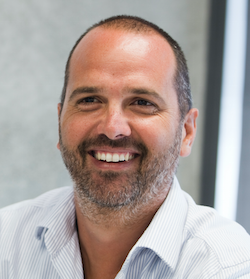
Everyone is familiar with the statistics. By 2020, the number of people aged 65 to 84 years will increase nearly 40% nationally. That means more than 77 million baby boomers, born between 1946 and 1964, are likely to retire over the next two decades. Of that number, an estimated 70% will need some form of long-term care at some point in their lives.
No matter how you break down those data, the assisted living industry appears to be poised for exponential growth, with the demand for services rising to previously unprecedented levels and an estimated 1.2 million new employees expected to be added to the field.
To deal with the myriad implications of this explosive growth — including ensuring delivery of consistently high-quality resident care, reducing the time it takes to ramp up new employees and ensuring compliance with various health and safety regulations — senior living administrators increasingly are turning to business process management software.
Shifting from procedures documents that are stored away in binders and forgotten on the shelf to an online process management solution will result in greater employee engagement and higher morale. Just as important, it will directly and positively affect the experience and satisfaction of the individuals receiving care. A clear understanding of “as is” and “to be” processes also will support the selection and customization of essential software for scheduling and invoicing and for enterprise resource planning system implementations.
Turning ideas into everyday action
A crucial element of process improvement in the senior living sector involves tapping into the creative input of the people who are best positioned to offer constructive advice. This means encouraging those responsible for carrying out the day-to-day work to come up with new ideas.
Without a platform for managing, communicating and providing feedback on processes, too many organizations have discovered just how difficult it can be to turn good ideas into everyday practice. Transferring ideas into a knowledge base creates a cycle that ensures that lean organizations have dynamic processes that are managed as an information asset.
To that end, it is vital to empower a go-to person and create a go-to place for processes. These days, teams expect to interact with processes in the same way they use a good website. Online and easily navigable, the modern process knowledge base provides opportunity for interaction, invention and ingenuity — with critical process information available in clear, everyday language.
Online solutions allow senior living providers to capture all procedures and transform every process into an easily accessible, web-based format that is stored in a single location. Most senior living facilities need to provide just enough detail so that users can see at a glance what needs to be done. Staff shouldn’t be bombarded with too much information. Rather, they need tools that enable them to drill down for additional details as needed.
Process management software can allow for each part of a complex process to be divided into multiple levels that are logically addressed. All forms and vital policy documents can be linked into the step of the process where they should be used, saving time and assuring accuracy. This can be tremendously beneficial, particularly for staff members who are dealing with a new situation. It is also invaluable in training new staff and for compliance.
Adopting a new approach to process management ultimately will allow senior living communities with hundreds or thousands of client interactions per day to maintain up-to-date records and ensure that every interaction is managed in line with the complex legal, regulatory and internal guidelines.
Toward a lean organization and engaged staff
To create a lean, well-managed senior living community, processes should be made accessible from a central place where updates are universal, usable and changeable.
The single point of access for all procedures means that staff not only will save time looking for files or manuals; it also will make it easier for them to follow guidelines. Simple access helps in producing higher and faster adoption rates and a more consistent, higher quality of care. Teams no longer will need to reinvent the wheel and dilute efforts away from provision of resident care. And with a centralized, structured knowledge asset, each staff member isn’t developing his or her own approach to solving the same problem.
In a compliance-heavy organization, process management software enables staff to more easily meet required standards and guidelines and — when an incident does happen — learn from it and adjust going forward. Because every step is recorded, teams can identify where an issue has occurred and analyze how to do better next time.
This kind of reflective practice is one of the real value-adds from process management software. Delivered from the cloud and also leveraging mobile technologies, these new collaboration tools are completely changing the way knowledge is managed and shared in senior living communities.
With heightened competition, rapid growth and a complex regulatory environment, the senior living market undoubtedly is facing numerous challenges. The adoption of a new approach to process and compliance, however, is allowing senior living communities to improve the delivery of quality care, reduce onboarding time for new staff, streamline audit management and support implementation of new systems and software required to drive growth and efficiencies. A more effective process management approach also can drive greater returns on the significant investments the senior living sector is already making in people and technology — both of which are key ingredients for ensuring their future success.
Ivan Seselj is CEO of Promapp Solutions, a provider of cloud-based process management software for creating and storing business processes online. You may contact him at [email protected] or follow him on Twitter at @Ivanseselj.




